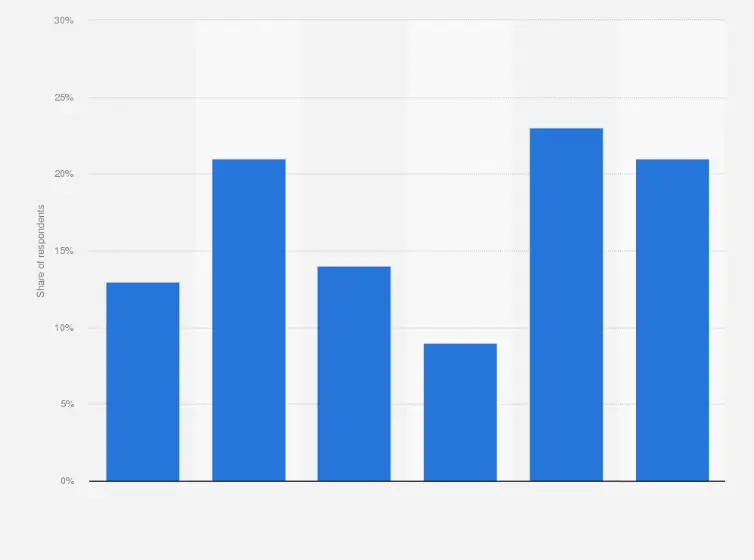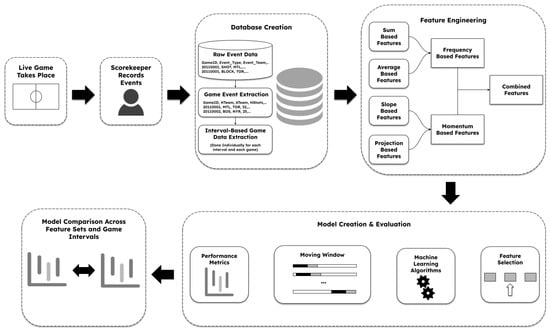Hockey lines are changed frequently throughout the game, with shifts lasting about 45 to 90 seconds per line. In hockey, lines are changed frequently and each line typically stays on the ice for around 45 to 90 seconds before being replaced.
This fast-paced rotation allows players to maintain their energy and ensures a consistent flow of fresh legs on the ice.
Table of Contents
- 1 Understanding Line Changes
- 2 Factors Influencing Line Changes
- 3 Frequency Of Line Changes
- 4 Impact Of Line Changes
- 5 Strategies For Optimizing Line Changes
- 6 Technology’s Role In Tracking Line Changes
- 7 Comparison With Other Sports
- 8 Evolution Of Line Changes In Hockey
- 9 Challenges Faced By Coaches Regarding Line Changes
- 10 Psychological Impact On Players
- 11 Future Predictions For Line Changes In Hockey
- 12 Frequently Asked Questions For How Often Do They Change Lines In Hockey
- 12.1 How Often Do Hockey Lines Change During A Game?
- 12.2 What Factors Determine The Frequency Of Line Changes In Hockey?
- 12.3 Why Are Frequent Line Changes Important In Hockey?
- 12.4 How Do Coaches Decide When To Change Lines In Hockey?
- 12.5 What Impact Do Frequent Line Changes Have On Game Dynamics?
- 12.6 What Are The Benefits Of Quick Line Changes In Hockey?
- 12.7 How Do Frequent Line Changes Affect The Overall Flow Of A Hockey Game?
- 13 Conclusion
Understanding Line Changes
Definition Of Line Changes
Line changes in hockey refer to the substitution of players on the ice during a game.
Importance Of Line Changes
Line changes are crucial in ensuring players stay fresh and maintain optimal performance levels.
Factors Influencing Line Changes
Line changes in hockey are influenced by various factors such as player fatigue, strategic matchups, and game situations. Teams typically change lines every 45-90 seconds to maintain energy levels and optimize performance on the ice. Adaptations in line combinations also impact the flow and competitiveness of the game.
Factors Influencing Line Changes In hockey, line changes play a crucial role in maximizing player performance and overall team success. Coaches strategically utilize line changes throughout the game to keep players fresh and adapt to various game situations. Multiple factors influence when and why line changes occur, including physical fatigue and game strategy. Physical Fatigue The fast-paced nature of hockey puts a significant demand on players’ physical endurance. Over the course of a game, players can quickly become fatigued, leading to a decrease in performance and increased risk of injury. Coaches closely monitor player fatigue levels and implement line changes to ensure a constant rotation of fresh legs on the ice. To optimize player performance and maintain energy levels, coaches utilize various strategies to manage physical fatigue: 1. Shift length: Coaches typically aim to keep player shifts short, typically lasting around 45 seconds to one minute. This allows players to exert maximum effort during their time on the ice while minimizing the risk of exhaustion. 2. Role-specific rotation: Different players have different roles within a team, with some emphasizing offensive talents while others focus on defensive responsibilities. To account for these varying roles, coaches strategically rotate lines to provide appropriate rest and maintain a balance between offensive and defensive prowess. Game Strategy Line changes in hockey also play a significant role in game strategy. Coaches use line changes strategically to exploit an opponent’s weaknesses, counter specific plays, or create mismatches on the ice. By adjusting line combinations, coaches can adapt to different game situations and gain a competitive advantage. Here are a few game strategy factors that influence line changes: 1. Matchups: Coaches often employ line changes to create favorable matchups against specific opponents. By analyzing the opponent’s strengths and weaknesses, coaches can send out their line combinations that have the best chance of succeeding against certain players or lines. 2. Power plays and penalty kills: When a team has a player advantage during a power play or is facing an opposition power play, line changes become critical. Coaches will frequently alter their lines to optimize offensive opportunities during power plays or to create strong penalty-killing units. 3. Momentum shifts: Hockey is a game of momentum, and coaches use line changes to maintain or shift the momentum in their team’s favor. A well-timed line change can provide a burst of energy, increase offensive pressure, or disrupt the opponent’s flow. In conclusion, line changes in hockey are influenced by various factors, including physical fatigue and game strategy. Coaches strategically utilize line combinations to keep players fresh, maximize performance, exploit opponent weaknesses, and adapt to different game situations. By carefully managing line changes, teams can gain a competitive advantage and increase their chances of success on the ice.Frequency Of Line Changes
Average Frequency In A Game
In hockey, the frequency of line changes varies based on several factors. On average, a team will typically change lines every 30 to 45 seconds during gameplay. This allows for players to maintain their energy levels and maximize performance on the ice. Coaches and players must strategize and communicate effectively to ensure that line changes occur at optimal times.
Variability In Different Game Situations
While the average frequency of line changes provides a general understanding, the variability in different game situations can lead to more frequent or less frequent line changes. For instance, during power plays or penalty kills, teams often alter their lines more frequently to capitalize on the advantage or defend against the opposing team’s power play. Additionally, in the final minutes of a close game, coaches may choose to keep their top players on the ice for longer periods, leading to less frequent line changes.

Credit: www.statista.com
Impact Of Line Changes
Hockey is a fast-paced game characterized by constant action and quick transitions. One of the key factors influencing the flow and performance of a hockey game is the frequency of line changes made by teams. The impact of line changes in hockey can significantly affect game flow and team performance.
Effect On Game Flow
Line changes in hockey have a direct impact on the continuity and tempo of the game. Frequent line changes can disrupt the flow of play, leading to intermittent stoppages and slowing down the overall pace of the game. Conversely, strategic line changes at opportune moments can inject fresh energy and momentum into a team, providing an advantage in maintaining game flow and applying offensive pressure.
Influence On Team Performance
The timing and effectiveness of line changes play a pivotal role in determining a team’s performance on the ice. Well-timed line changes allow players to maintain peak physical and mental exertion, optimizing their performance throughout the game. Conversely, poor line management can result in fatigue and diminished performance, affecting a team’s ability to execute plays and defend against opponents.
Strategies For Optimizing Line Changes
Line changes play a crucial role in the fast-paced game of hockey. The ability to make swift and strategic substitutions can provide teams with a competitive edge. In this section, we will explore a few strategies that can help teams optimize their line changes for maximum effectiveness.
Matching Lines Against Opponents
One strategy employed by coaches is to match specific lines against their opponents. This involves strategically selecting which players will take the ice to counter the strengths and weaknesses of the opposing team. By analyzing the opponent’s line combinations and player tendencies, coaches can make informed decisions that can exploit favorable matchups.
To implement this strategy effectively, coaches often utilize their top lines (typically consisting of their most skilled and experienced players) against the opponent’s top lines. The goal is to neutralize their offensive firepower while also providing an opportunity to generate scoring chances of their own. Similarly, coaches may deploy defensive-oriented lines against opponent lines that have a reputation for being high-scoring or aggressive.
| Matching Strategy | Opponent Line | Preferred Line |
|---|---|---|
| Offensive Matchup | High-scoring line | Top offensive line |
| Defensive Matchup | Physical or aggressive line | Defensive-minded line |
Quick Changes During Stoppage Of Play
Another strategy for optimizing line changes is to make quick substitutions during stoppages of play. These stoppages include situations such as an icing call, an offside violation, or a timeout. Taking advantage of these brief breaks allows teams to get fresh legs on the ice without sacrificing valuable playing time.
Coaches often closely monitor the game to identify these opportune moments for quick line changes. By communicating and coordinating with the players on the bench, they can execute swift substitutions, ensuring that tired players are replaced by energized teammates. This strategy helps maintain a high level of intensity throughout the game and prevents players from becoming fatigued.
By implementing these strategies and making optimal line changes, teams can keep their players fresh and increase the likelihood of success on the ice. The ability to adapt and adjust line combinations based on the opponent’s strengths and exploiting opportune moments for quick substitutions can be a game-changer in the fast-paced world of hockey.
Whether it’s matching lines against opponents or executing quick changes during stoppages of play, a well-executed line change strategy can be the difference between victory and defeat on the ice.
Technology’s Role In Tracking Line Changes
Technology plays a vital role in tracking line changes in hockey, revolutionizing the way teams manage player rotations through advanced analytics and cutting-edge player tracking systems.
Use Of Data Analytics
- Data analytics offer insights into player performance related to line changes, helping coaches make data-driven decisions for optimal team efficiency.
- Coaches can analyze statistics such as time on ice and scoring opportunities to determine the most effective line combinations based on data trends.
Player Tracking Systems
- Player tracking systems utilize GPS sensors embedded in players’ equipment to monitor their movements on the ice with high precision.
- Real-time tracking data enables coaches to observe player positioning and fatigue levels, aiding in strategic line changes during crucial game moments.
Comparison With Other Sports
Comparison with Other Sports:
Contrast With Soccer Substitutions
In hockey, line changes are frequent, unlike soccer where substitutions are limited to a few players.
Parallel With Basketball Substitutions
Hockey line changes are similar to basketball substitutions; players switch often to maintain energy levels.

Credit: www.nature.com
Evolution Of Line Changes In Hockey
Hockey has evolved over the years, and so have the strategies and tactics employed by teams. One aspect that has seen significant changes is line changes. In the early days of the game, players would often stay on the ice for long stretches of time, rarely substituted. However, as the game became faster and more physically demanding, the need for more frequent line changes became evident.
Historical Perspective
In the early years of hockey, line changes were a rarity. Teams consisted of a small roster of players, and fatigue was simply a part of the game. There were no fixed rules governing line changes, and players would typically rotate at the discretion of the coach or captain.
- In the late 1920s, the National Hockey League (NHL) introduced a requirement for teams to submit a list of four lines consisting of three forwards and two defensemen.
- Line changes were then limited to when the game was stopped or during intermissions.
- As the sport gained popularity, teams began to carry larger rosters to accommodate more frequent line changes.
This historical perspective highlights the early recognition of the need for line changes but also shows the limitations and lack of structure in their implementation.
Modern Trends
In today’s fast-paced game, line changes are not only more frequent but also more strategic. Coaches carefully analyze player performance and adjust line combinations accordingly. These modifications aim to optimize team chemistry, exploit strengths, and capitalize on opponent weaknesses.
There are several factors that dictate line changes in modern hockey:
- Fatigue: Players are constantly monitored for fatigue levels to ensure optimal performance. Line changes help rest tired players and maintain energy levels throughout the game.
- Matchups: Coaches strategically match lines against specific opponents. For example, a physical line may be deployed to counter an aggressive opposing team, while a skilled line might be used to exploit defensive weaknesses.
- Special Teams: Line changes become even more crucial during power plays or penalty kills. Coaches may use specific players known for their offensive or defensive prowess to gain an advantage.
Modern trends in line changes emphasize the importance of flexibility, adaptability, and effective communication among players and coaches.
Challenges Faced By Coaches Regarding Line Changes
Challenges Faced by Coaches Regarding Line Changes:
Hockey coaches are confronted with numerous challenges when it comes to managing line changes throughout a game. Ensuring that players remain fresh and effective, adapting to injuries and penalties, and maintaining a cohesive team dynamic are all critical aspects of successful line management.
Balancing Player Fatigue And Performance:
Coaches face the ongoing challenge of balancing player fatigue and performance during line changes. They must carefully monitor the amount of time each player spends on the ice to prevent exhaustion and optimize their performance.
Handling Injuries And Penalties:
Addressing injuries and penalties further complicates the task of managing line changes. Coaches need to make swift and strategic decisions to adjust their lines in response to unexpected situations, ensuring that the team maintains its competitive edge.
Psychological Impact On Players
The psychological impact on players in hockey when it comes to changing lines during a game is an essential aspect to consider. The mental preparation for line shifts and maintaining team cohesion plays a crucial role in the performance and effectiveness of the players.
Mental Preparation For Line Shifts
Mental preparation for line shifts is vital for players to adapt to the constantly changing dynamics of the game. Rapid decision-making and adjustment to new linemates require strong focus and readiness to perform at a high level. Players need to stay mentally agile and mentally alert to anticipate and react to line changes effectively.
Maintaining Team Cohesion
The cohesion within the team can be affected by frequent line changes. Players must maintain a strong sense of unity and communication regardless of the changes in their playing partners. Emphasizing team coherence and effective communication is crucial to ensure that new line combinations can work together seamlessly.
Future Predictions For Line Changes In Hockey
With the continuous evolution of the game, hockey enthusiasts eagerly anticipate the future of line changes in the sport. As technology advances and strategies evolve, there are several potential changes that could revolutionize the way line changes are implemented in hockey. This article explores the future predictions for line changes in hockey, focusing on potential rule changes and the integration of advanced analytics.
Potential Rule Changes
As the game of hockey continues to evolve, potential rule changes could have a significant impact on line changes. Here are a few potential rule changes that could shape the future of line changes:
- Shortening the length of shifts: To increase the pace of the game and promote more scoring opportunities, the NHL could consider shortening the length of shifts. This could result in more frequent line changes as players tire more quickly.
- Allowing more flexibility for line changes: Currently, line changes are primarily made during stoppages in play. However, the league may explore allowing more flexibility for line changes, such as allowing changes on the fly during active play.
- Stricter enforcement of line change infractions: To prevent teams from taking advantage of line change rules, the league may enforce stricter penalties for infractions related to improperly executed line changes.
These potential rule changes could lead to more dynamic and strategic line changes during the game, keeping players fresh and introducing new elements of strategy for coaches.
Integration Of Advanced Analytics
The integration of advanced analytics has already begun to play a significant role in hockey, and it is expected to influence line changes in the future. Advanced analytics provide teams with valuable insights into players’ performance, fatigue levels, and optimal line combinations. This data-driven approach to line changes allows coaches to make more informed decisions and maximize their team’s performance.
With the use of tracking technology and data analysis, coaches can determine the ideal line combinations based on players’ chemistry, performance metrics, and historical data. This integration of advanced analytics can lead to more strategic line changes that take into account factors such as matchup advantages, player fatigue, and optimal player deployment for specific situations.
Additionally, teams can use analytics to measure the impact of line changes on puck possession, shot attempts, and scoring chances. This information can help coaches fine-tune their line change strategies to gain a competitive advantage.
| Advantages | Description |
|---|---|
| Optimal player deployment | Numerical analysis can assist coaches in determining the best combinations of players for maximum performance. |
| Fatigue management | Analytics can help identify players who may be fatigued and need timely line changes for peak performance. |
| Matchup advantages | Coaches can leverage analytics to identify favorable matchups and strategize line changes accordingly. |
By integrating advanced analytics, the future of line changes in hockey will likely be influenced by data-driven decision-making, leading to a more strategic and efficient approach.

Credit: www.mdpi.com
Frequently Asked Questions For How Often Do They Change Lines In Hockey
How Often Do Hockey Lines Change During A Game?
Hockey lines typically change every 45 to 90 seconds, depending on game circumstances.
What Factors Determine The Frequency Of Line Changes In Hockey?
The pace of the game, player fatigue, and strategic considerations influence line change frequency.
Why Are Frequent Line Changes Important In Hockey?
Regular line changes allow players to maintain their energy and performance levels throughout the game.
How Do Coaches Decide When To Change Lines In Hockey?
Coaches assess game situations, player performance, and opponent matchups to determine optimal line changes.
What Impact Do Frequent Line Changes Have On Game Dynamics?
Regular line changes ensure fresh players on the ice, contributing to dynamic gameplay and strategic versatility.
What Are The Benefits Of Quick Line Changes In Hockey?
Frequent line changes keep players rested, enhance team performance, and support tactical adaptability during games.
How Do Frequent Line Changes Affect The Overall Flow Of A Hockey Game?
Regular line changes maintain a fast-paced and engaging game flow, showcasing the skills of various players.
Conclusion
To sum up, the frequency of line changes in hockey plays a crucial role in maintaining players’ energy levels and strategic deployments on the ice. Coaches strategically rotate their players to exploit opponents’ weaknesses and optimize performance. Understanding the importance of line changes and their impact on game dynamics allows players and fans to appreciate the intricacies of this fast-paced sport.
So next time you watch a hockey game, pay close attention to how often the lines change and the impact it has on the outcome. Happy watching!
